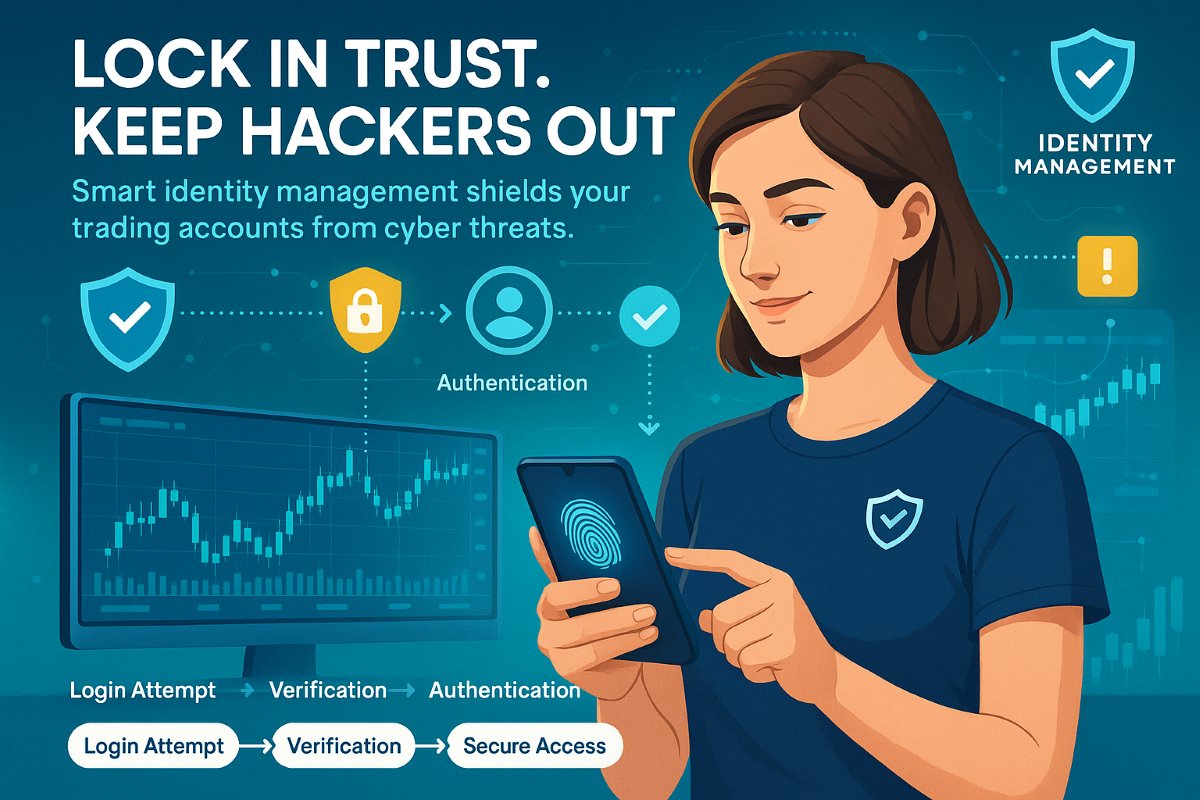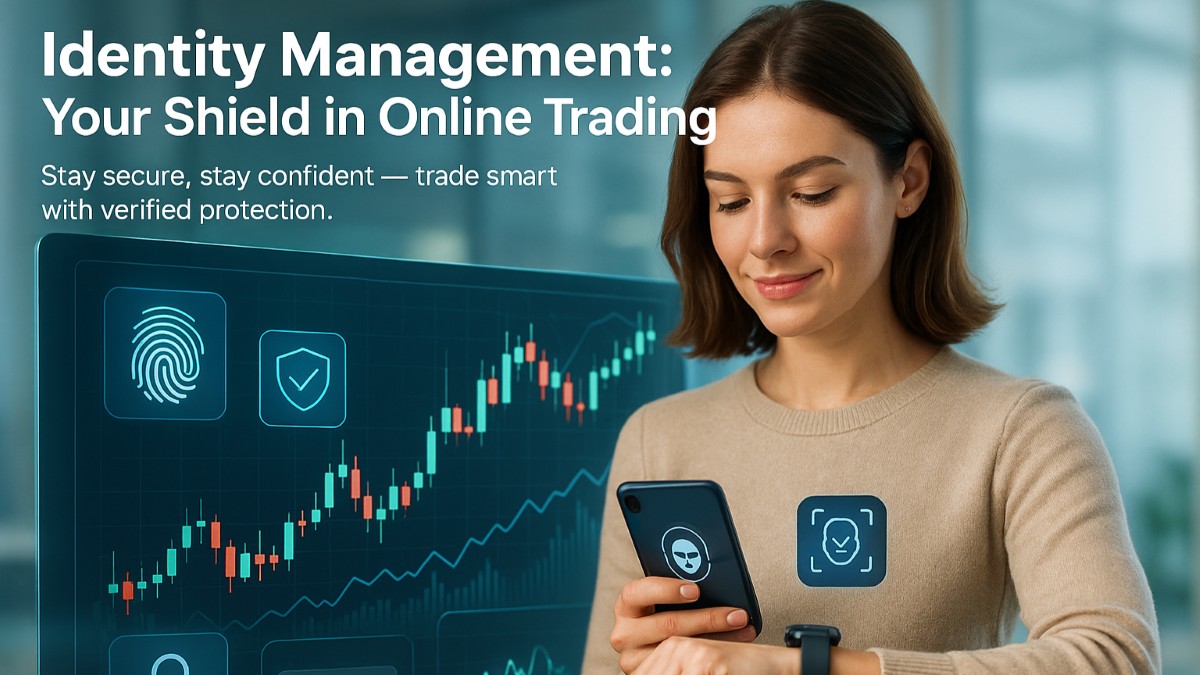Trading online can feel uncertain when your personal information is at risk. Reports show that cybercrime in trading platforms has been steadily increasing. This blog explains how identity management functions to guard traders against such dangers.
Keep reading to trade more intelligently and securely!
Key Components of Identity Management in Online Trading

Strong identity management acts as a guard dog, keeping your online trading accounts safe. It uses layers of protection to verify who you are before granting access.
Authentication and Verification Processes
Authentication systems confirm a trader’s identity before granting access. Passwords, though common, aren’t always safe due to phishing threats. Many platforms now use enhanced methods like biometric scans or device recognition for added security.
These steps protect accounts and sensitive data from falling into the wrong hands.
Verification adds another layer by confirming personal details against reliable records.Understanding how different trading styles intersect with security also helps traders manage risk more effectively. For instance, many wonder is trading options day trading and how such strategies impact account safety and verification needs on regulated platforms. Platforms might ask for government-issued IDs or bank documents to check your identity is legitimate.
“The goal is simple: keep fraudsters away and traders confident,” says cybersecurity expert Jane Monroe. Both processes, when combined, reduce online risks significantly.
Multi-Factor Authentication (MFA)
MFA adds an additional level of security to online accounts. Instead of relying solely on a password, it requires two or more verification steps. Traders may use something they know, like a PIN, and something they possess, like a smartphone app or security token.
This approach helps deter hackers. Even if someone steals your password, they cannot access the account without completing all steps. Many trading platforms now use MFA to prevent unauthorized logins and safeguard sensitive data linked to accounts.
How Identity Management Prevents Cybersecurity Threats

Hackers often use stolen data to impersonate traders and access accounts. Identity management tools block these attempts by verifying users at every step.
Protecting Against Identity Theft
Cybercriminals often misuse personal data to commit identity theft, leading to stolen funds or unauthorized trades. Identity management helps traders protect their digital identity through strong authentication and verification methods.
Using tools like biometric scans or encrypted passwords adds an extra layer of security against such risks.
Multi-factor authentication (MFA) serves as a safeguard for accounts by requiring multiple proofs of identity before access is granted. As one expert put it:.
Adding more locks makes breaking in far harder.
This approach reduces the chances of fraud even if hackers bypass one security measure.
Preventing Unauthorized Account Access
Identity management enhances your account's security layers. Strong passwords alone can't prevent unauthorized access anymore. Hackers exploit weak spots like reused login credentials or predictable patterns.
Multi-factor authentication (MFA) counters these threats with additional verification steps. For example, a text code sent to your phone adds an extra layer of protection.
Sophisticated monitoring systems detect unusual behavior instantly. Logging in from unexpected locations or attempting rapid password resets triggers alerts. These immediate responses halt cybercriminals before they compromise accounts or steal funds, ensuring online traders remain secure and assured daily.
Role of Identity Management in Fraud Prevention

Identity management acts like a bouncer, stopping fraudsters before they can cause harm. It helps traders remain ahead of sneaky cybercriminals.
Monitoring Suspicious Activities
Tracking irregular behavior helps identify potential fraud early. Sudden changes in trading patterns, like unusually large transactions or multiple failed login attempts, often indicate issues.
By flagging such actions, identity management tools generate alerts for immediate review.
Real-time monitoring enhances online safety by analyzing user activity and identifying risks promptly. For traders, this means additional protection against unauthorized moves that could compromise their assets or privacy.
Systems designed to detect anomalies work diligently to protect accounts at all times.
Ensuring Secure Transactions
Cybersecurity tools confirm each trader's identity during every transaction. This lowers the risk of impersonation or fraud. Systems highlight unusual patterns, like sudden trades from unknown locations, for additional checks. However, these protections work best when supported by a reliable digital trading infrastructure.
These efforts safeguard personal data and financial details.
Traders also gain from secure communication channels that deter hackers. Reliable authentication methods keep accounts secure after multiple failed login attempts. These actions help avert threats while offering traders confidence about their funds' safety.
Conclusion
Strong identity management acts as a protective barrier for online traders. It prevents threats, safeguards personal data, and keeps cybercriminals at bay. With these measures in place, trading becomes more secure and straightforward.
Trust increases when security systems operate seamlessly in the background. Stay vigilant, stay protected, and trade with assurance!



